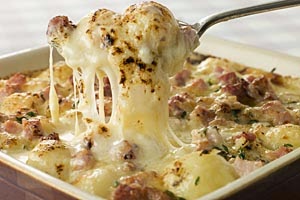Ja pots afegir a la teva dieta noves fruites de temporada:
SÍNDRIA I MELÓ, les "estrelles" de l'estiu, destaquen pel seu alt contingut en aigua: imprescindible per mantenir una bona hidratació, i més en mesos de calor!
Afegeix a la teva llista: les CIRERES i les PRUNES.
De les anteriors, et recomano especialment la síndria pel què fa a la relació quantitat d'aigua/sucres: és de les que més aigua t'aporta i la quantitat de sucres és més baixa que les altres. El meló, en canvi, és força ric en sucres (en comparació), igualment les cireres.
A més a més, tens, de temporada, l'ALVOCAT. Aquesta fruita destaca per la qualitat dels seus greixos i la relació d'aquests i els saturats.
L'alvocat t'aporta àcids grassos monoinsaturats (el principal representant d'aquests és l'oli d'oliva) els quals afavoreixen l'augment del colesterol HDL o el que coneixem com a "colesterol bo".
I recorda que les fruites sempre t'aporten en més o menys quantitat vitamines i minerals.
You can add to your diet WATERMELON and MELON, they are our summer "stars". Why??
Because they are rich in water what is perfect to hydrate/moisturise your body. Can you see? Wise nature: summer = hot, we need more water because we loose more so nature "gives" us fruit rich in it!
You can also add: CHERRIES and PLUM.
I recommend you the most: watermelon, because it contains high percentage of water and not to much sugar. On the contrary, melon has more quantity of sugar than watermelon, and also cherries has (you can eat them, of course! It's just information for you to combine food to eat healthy and well-adjusted).
And another one: AVOCADO. It provides you: Monounsaturated Fat (olive oil is the representative of this group), which assists HDL cholesterol increase (in catalan and spanish we call it "the good cholesterol").
Remember that fruit always supplies you with vitamins and minerals.
Ya puedes añadir las nuevas frutas de temporada en tu dieta:
SANDÍA y MELÓN - las "estrellas" del verano, destacan por su alto contenido en agua: imprescindible para mantener una buena hidratación y más en meses calurosos!
Añade también en tu lista: CEREZAS y CIRUELAS.
De todas estas, te recomiendo especialmente la sandía porqué la relación agua/azúcares que contiene es realmente buena: es de las que más agua te aporta y menos azúcares.
El melón, en cambio, es más rico en éstos últimos, en comparación, e igualmente las cerezas. Además te aportan menos agua.
Otra fruta de temporada: AGUACATE. Este destaca por su calidad de ácidos grasos o grasa así como la relación de estos y los saturados.
El aguacate te aporta ácidos grasos monoinsaturados (el aceite de oliva es el principal representante de éste grupo), los cuales favorecen el aumento del colesterol HDL, conocido también como "colesterol bueno".
Recuerda que la fruta siempre te aporta más o menos cantidad de vitaminas y minerales.
BON PROFIT - ENJOY THE FRUITS - BUEN PROVECHO!!


